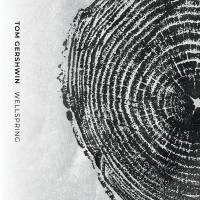Home » Jazz Articles » Extended Analysis » Nik Bartsch's Mobile: Continuum
Nik Bartsch's Mobile: Continuum
After moving to Munich's ECM Records to release Ronin's Stoa (2006), Bärtsch continued to grow that group's specific, complex yet surprisingly danceable brand of Zen Funk on two additional studio albums (2008's Holon and 2010's Llyrìa), in addition to 2012's Ronin Live, which also saw that group's first shift in personnel, with original bassist Bjørn Meyer replaced with Thomy Jordi and, subsequent to that album, the pruning of Ronin down from a quintet to a quartet with the departure of percussionist Andi Pupato. In recent years Ronin has also been occasionally expanded into an even larger constellation with his yet-to-be-recorded Ronin Rhythm Clan, heard live at the 2013 Enjoy Jazz Festival in Mannheim, Germany.
But while Ronin has become Bärtsch's best-known and most-toured group—largely because of the greater international distribution and promotion possible through ECM Records—neither his solo nor Mobile projects have been completely inactive, though largely dormant—at least, it seems, from the eyes of an international public. And so, with four Ronin albums released on ECM, it seemed inevitable that Bärtsch should finally bring Mobile to that same global audience. In many ways the decision to introduce the more eminently accessible Ronin first was the right one, as the more deeply ritualistic Mobile is, while still rhythmically compulsive, a group that requires even greater immersion to truly appreciate its inimitable charms and chamber-like qualities. But as with ECM, Bärtsch is never one to stand still for too long; and so, while Continuum features the current core Mobile quartet—in addition to Ronin regulars, reed multi-instrumentalist Sha and drummer/percussionist Kaspar Rast, rounded out with drummer/tuned percussionist Nicolas Stocker—and includes but two new compositions, in addition to new looks at pieces previously heard on Ritual Groove Music and Mobile's second album, Aer (Tonus-Music, 2004; reissued Ronin Rhythm, 2006), Bärtsch continues to explore larger contexts by adding a string quintet on three of its eight tracks.
One of the biggest differentiators with Mobile—beyond a lesser interest with Ronin's impeccable grooves based on jazz and, especially, funk—was that, in its early days, the group would deliver live concerts that were more experiential than simple performance; the group's painstakingly developed music sometimes going on for as long as 36 hours: truly ritualistic; truly Zen. But while such hypnotic explorations could, indeed, be appealing in a live context, it's also a good thing that Bärtsch, in conjunction with producer Manfred Eicher, has taken a more concise approach to introducing Mobile's generally less funky but no less captivating music to a larger audience. That said, none of Continuum's compositions, bar one (the five-minute "Modul 4"), run less than eight minutes, which provides plenty of time to take Bärtsch's often-times complex contrapuntal and polyrhythmic ideas from their gentle beginnings, through to their unpredictable but somehow ultimately inevitable conclusions.
Perhaps the biggest differentiator between Mobile and Ronin, especially now that both are quartets—and aside from a more decidedly chamber music aesthetic that makes the introduction of strings on "Modul 18" (first heard on Aer), "Modul 44" (first introduced with Ronin on Holon) and "Modul 60" (making its first appearance on record here), the perfect choice—is the instrumentation. Ronin's blend of a more conventional lineup—piano, bass, drums, reeds and, until recently, percussion—makes it more eminently approachable. In addition to Bärtsch's (sometimes prepared) piano and Sha's exclusive focus on bass and contrabass clarinets, Mobile's use of two drummers/percussionists—with Stocker's focus on tuned percussion providing another melodic instrument with which Bärtsch can layer motif upon melodic motif—creates the potential for a different kind of density than Ronin possessed while, at the same time, providing the possibility for even greater delicacy and gentility.
If Sha's role in Ronin has been increasingly visible, in particular his use of alto saxophone in recent years allowing his lines to soar more clearly above the rest, with Mobile he's nearly invisible, his exclusive focus on low register instruments often rendering him more felt than heard. Stocker, on the other hand—who replaces both original group member Don Li and subsequent percussionist Mats Eser in the current incarnation—both meshes with Rast's ability to find groove in every nook and cranny (but here, just as often with brushes as with sticks) and blends with Bärtsch and Sha, not just melodically but sonically as well, as his work in the upper registers on tuned percussion is often nearly indistinguishable from that of the pianist.
But if all of this makes it sound like a group where individualism is somehow discouraged and the emphasis is, instead, on the totality of the group's collective sound, then the only answer to that is this: there are precious few musicians capable of applying themselves to such a rigorous compositional approach, where repetition is as constant as the gradual changes that are introduced to allow each piece to evolve slowly, over considerable periods of time. Yes, repetition may indeed be constant, but if the funkier vibe of Ronin's music makes it seem somehow (and deceptively) easier to digest, the music of Mobile is considerably more challenging...and yet, still somehow within reach. This is music that, freed as it is from the intrinsics of a conventional rhythm section (even when playing wholly unconventional music), is therefore capable of going to places that Ronin cannot. Contrary to this notion, however, while the album-opening "Modul 29_14" (another new piece) may sound like something Ronin could execute with ease, the more abstract, slow-tempo'd and sparsely colored "Modul 12," first introduced on Ritual Groove Music, does not. It is, in fact, a tune that could easily be imagined running on for hours on end, drawing audiences into its trance-like/inducing spell.
Elsewhere, "Modul 5"—first explored on Ritual Groove Music but later, as a solo piano piece, on 2002's Hishiryo: Piano Solo—runs at a rapid-fire pace that would be less likely to work in the context of Ronin's groove-driven music. It's also a relatively rare overt demonstration of Bärtsch's virtuosic abilities—abilities for which much of his music does not allow, even though many of his compositions demand a kind of left hand/right hand independence that would challenge many accomplished pianists. Stocker's combination of tuned wood and metal come together with the pianist to create a relentlessly build, bolstered by Sha's long-held notes and Rast's quarter-note bass drum pulse, to the composition's first climax...only to dissolve to near-silence before Bärtsch re-enters, once again, but this time in his instrument's upper register, to gradually create yet another unrelenting build—with the same quarter-note bass drum and, this time, cymbal splashes and a deep contrabass clarinet line—to a second and final climatic peak...and conclusion.
If anything, Mobile's music possesses even greater diversity—temporally, texturally, (poly)rhythmically, melodically and contrapuntally—than that of Ronin. It's an unfair judgement to suggest, however, that Mobile is a better forum for Bärtsch's music—especially for those who've experienced Ronin's exhilarating live performances; they are simply different sides of the same coin. But even more than Ritual Groove Music and Aer, Continuum demonstrates the compositional breadth and depth that Bärtsch can explore with Mobile. The world may not be ready for 36-hour live performances by Mobile—though the group is still capable of delivering continuous four-hour performances, as it did at the 2014 Enjoy Jazz Festival—but there's little doubt that those who've become fans of Ronin's more eminently groove-laden music will be (if they weren't already) ready for this group's richer compositional rigor...for whom the term Continuum is, indeed, wholly appropriate for its broader-spectrum'd musical treasures.
Track Listing
Modul 29_14; Modul 12; Modul 18; Modul 5; Modul 60; Modul 4; Modul 44; Modul 8_11.
Personnel
Nik Bärtsch
pianoNik Bärtsch: piano; Sha: bass clarinet, contrabass clarinet; Kaspar Rast: drums, percussion; Nicolas Stocker: drums, tuned percussion; Etienne Abelin: violin (3, 4, 7); Ola Sendeckl: violin (3, 4, 7); David Schnee: viola (3, 4, 7); Solme Hong: cello (3, 4, 7); Ambrosius Huber: cello (3, 4, 7).
Album information
Title: Continuum | Year Released: 2016 | Record Label: ECM Records
Tags
PREVIOUS / NEXT
Support All About Jazz
 All About Jazz has been a pillar of jazz since 1995, championing it as an art form and, more importantly, supporting the musicians who make it. Our enduring commitment has made "AAJ" one of the most culturally important websites of its kind, read by hundreds of thousands of fans, musicians and industry figures every month.
All About Jazz has been a pillar of jazz since 1995, championing it as an art form and, more importantly, supporting the musicians who make it. Our enduring commitment has made "AAJ" one of the most culturally important websites of its kind, read by hundreds of thousands of fans, musicians and industry figures every month.



















